Low-Maintenance Landscaping Ideas for Effortless Outdoor Living
Table of Contents
There’s something deeply rewarding about a beautiful outdoor space that doesn’t require constant attention. In today’s busy world, homeowners are increasingly seeking landscapes that provide style, serenity, and functionality—without devoting every weekend to yard work. Whether you’re downsizing your gardening efforts or just getting started with landscaping, a low-maintenance approach ensures you can enjoy your yard more and labor less.
According to the National Gardening Association, over 67% of homeowners consider ease of maintenance a top priority in landscape design. The growing demand for sustainable, efficient outdoor spaces has sparked new trends in plant choices, layout planning, and smart irrigation systems. Best of all, low-maintenance doesn’t mean boring—on the contrary, it often results in cleaner, more polished landscapes that reflect modern living.
This guide walks you through the top principles and design ideas for low-maintenance landscaping. From selecting hardy native plants to installing gravel pathways and minimalist hardscaping, you’ll learn how to reduce chores while elevating curb appeal. Each section includes practical tips, visual guides, and inspiration to transform your yard into a relaxing retreat.
Use Native and Drought-Tolerant Plants
Choosing the right plants is the foundation of an easy-care yard. Native species are adapted to your region’s climate, requiring less water, fewer fertilizers, and little intervention. Drought-tolerant varieties like lavender, sedum, and ornamental grasses not only survive harsh conditions but also add texture and color.
Rather than planting needy annuals that require replanting and deadheading, focus on perennials and evergreens that retain their beauty year-round. Group plants with similar water and sunlight needs for simpler irrigation and healthier growth.
Plant Selection
| Type | Water Needs | Maintenance Level | Ideal Placement |
| Lavender | Low | Very Low | Sunny borders, dry zones |
| Sedum (Stonecrop) | Low | Very Low | Rock gardens |
| Boxwood | Medium | Low (occasional trim) | Foundation plantings |
| Fountain Grass | Low | Low | Containers, focal areas |
| Coneflower (Echinacea) | Low | Low | Pollinator gardens |
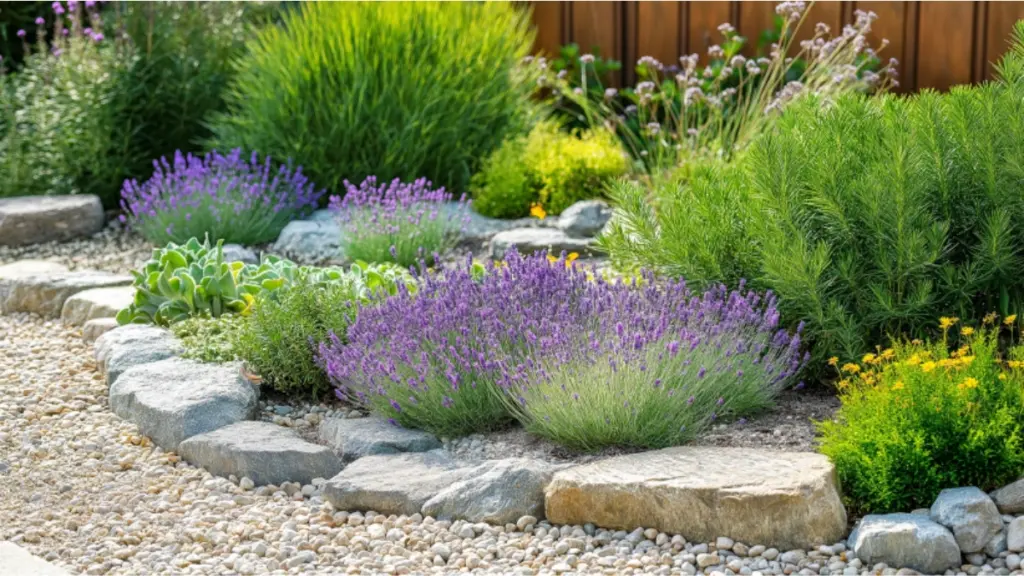
Embrace Hardscaping Elements
Hardscaping refers to the non-plant features of your yard—pavers, gravel, stone paths, retaining walls, and more. These elements require virtually no maintenance and offer clean, defined structure. Replacing high-maintenance lawns with gravel beds, paver patios, or stepping stones drastically cuts down on watering and mowing.
Hardscaping also adds functionality. A stone patio becomes a seating area. A gravel path prevents muddy walkways. Choose materials like decomposed granite, river rock, or concrete for timeless appeal.
Hardscape Feature Comparison
| Hardscape Type | Maintenance Needs | Durability | Best Use |
| Gravel | Very Low | High | Walkways, ground cover |
| Paver Patio | Low | Very High | Dining and lounge areas |
| Stone Edging | Very Low | High | Garden beds, pathways |
| Retaining Wall Blocks | Low | Very High | Slopes, raised beds |
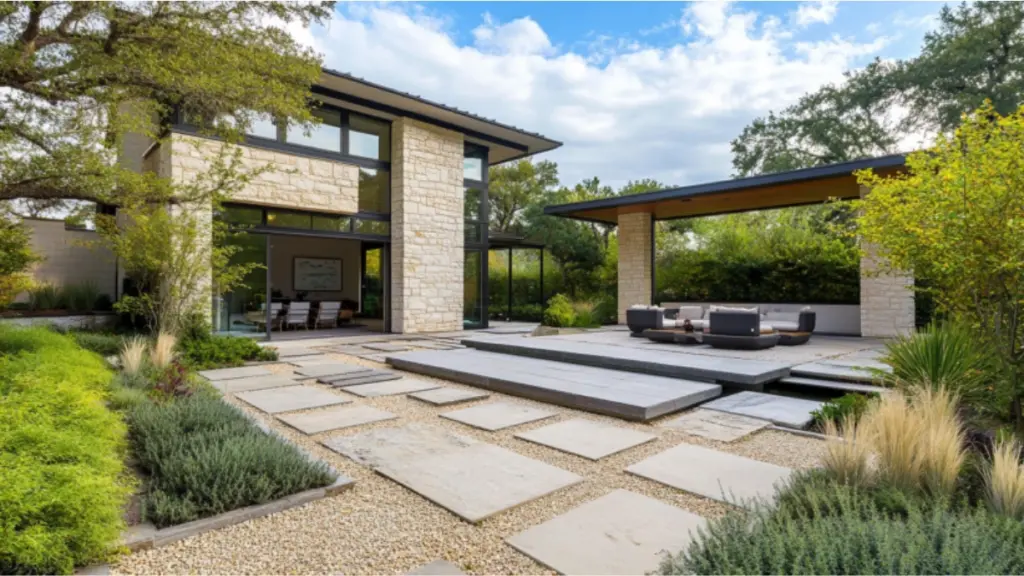
Use Ground Covers to Replace Traditional Lawns
Lawns are beautiful but notoriously high-maintenance. Replacing all or part of your turf with ground covers is a smart alternative. These low-growing plants like creeping thyme, clover, or mondo grass spread easily and resist weeds—while offering lush green coverage with a fraction of the effort.
Some ground covers are walkable, others ideal for borders or shaded corners. Many require no mowing and minimal watering once established.
Low-Maintenance Ground Cover
| Ground Cover | Sun Requirement | Walkable | Bloom Time | Water Needs |
| Creeping Thyme | Full Sun | Yes | Summer | Low |
| Clover | Full Sun | Yes | Spring/Summer | Medium |
| Mondo Grass | Shade to Part Sun | No | Rarely blooms | Low |
| Ice Plant | Full Sun | No | Summer | Very Low |
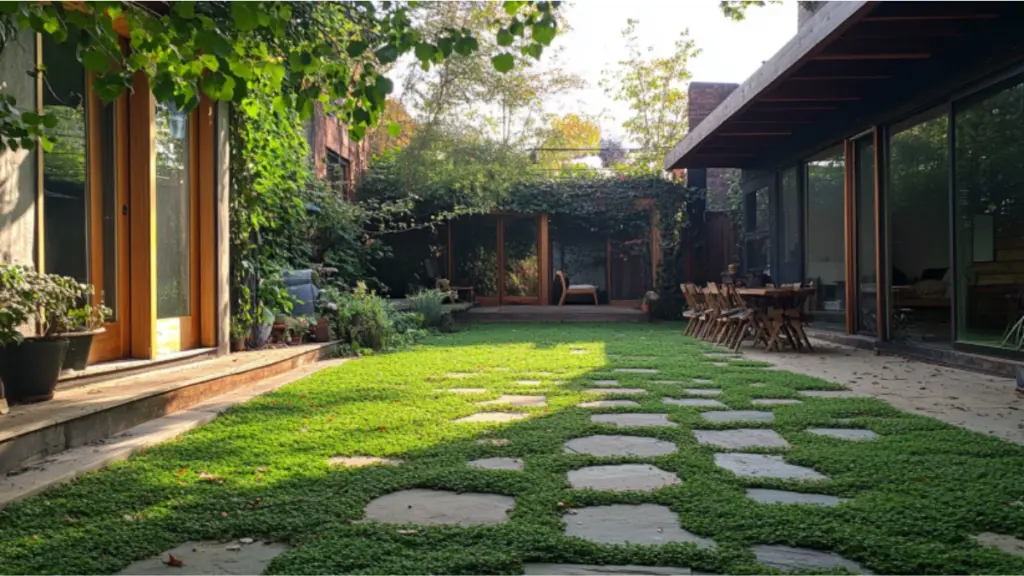
Install Smart Irrigation Systems
Watering by hand is time-consuming and often inefficient. A smart irrigation system uses sensors, timers, and drip lines to deliver the right amount of water directly to plant roots. This reduces waste and supports healthy, deep root growth.
Drip irrigation is especially great for flower beds and vegetable gardens. For larger areas, consider systems with moisture sensors or weather-based controllers that adjust watering schedules automatically.
Irrigation Options
| System Type | Efficiency | Best For | Manual Work |
| Drip Irrigation | Very High | Beds, containers | Very Low |
| Soaker Hose | High | Shrubs, hedges | Low |
| Smart Sprinkler System | High | Lawns, large areas | Very Low |
| Manual Watering | Low | Small gardens only | High |
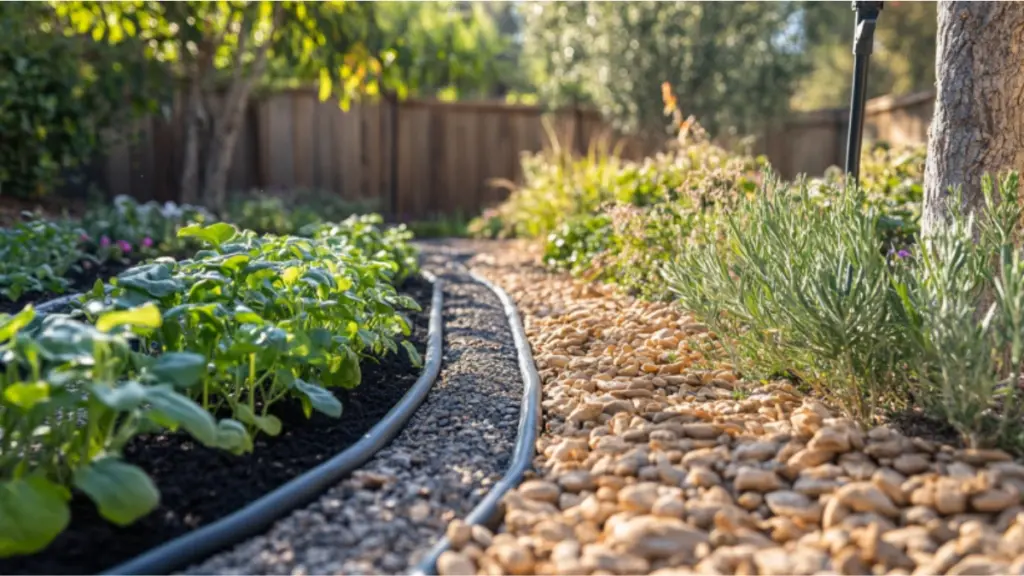
Mulch and Weed Barrier Strategies
Mulch is one of the simplest and most effective tools for low-maintenance gardening. It reduces weed growth, retains soil moisture, regulates temperature, and enhances aesthetics. Organic mulches like bark, wood chips, and shredded leaves also improve soil quality over time.
Use landscape fabric under mulch to block stubborn weeds, especially in high-traffic or large planting areas. Replenish mulch once a year for best results.
Mulch Material Comparison Table:
| Mulch Type | Appearance | Breakdown Time | Ideal Use |
| Bark Mulch | Natural | 1–2 years | Trees, flower beds |
| Wood Chips | Rustic | 2–3 years | Shrub beds, borders |
| Shredded Leaves | Earthy | 1 year | Vegetable gardens |
| Rubber Mulch | Long-lasting | 5+ years | Play areas, walkways |
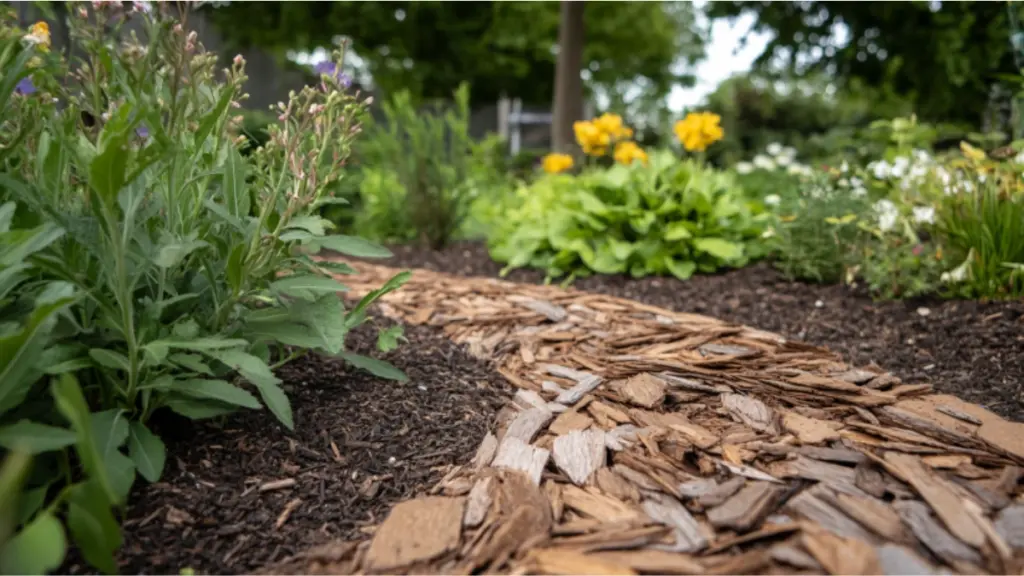
Simplify with Low-Maintenance Outdoor Zones
Designing your landscape into functional zones—such as dining, lounging, gardening, and storage—makes upkeep easier. Each area serves a specific purpose and is styled accordingly. Instead of managing a vast lawn or scattered features, you’re creating pockets of purposeful space.
For instance, a gravel courtyard with lounge chairs needs far less upkeep than a patch of grass. A raised bed garden simplifies vegetable care. Even a small bistro area with potted herbs can serve as a stylish yet simple outdoor dining spot.
Designing Zones Table:
| Zone Type | Materials Needed | Maintenance Level | Ideas |
| Dining Zone | Patio, table, lighting | Low | Bistro lights, pavers |
| Garden Zone | Raised beds, compost area | Medium | Seasonal rotation |
| Relaxation Zone | Gravel, chairs, fire pit | Very Low | Native plants, lanterns |
| Utility Zone | Shed, bins, path stones | Low | Decorative fencing, mulch |
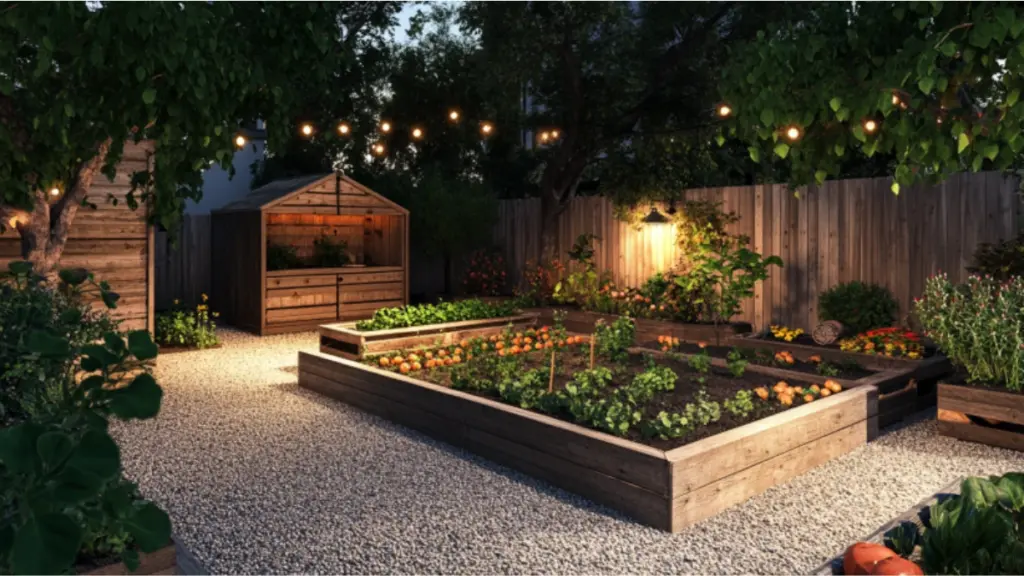
Designing with Perennials and Shrubs for Long-Term Ease
Perennials and shrubs are key players in a low-maintenance yard. Unlike annuals, they come back year after year, often requiring just occasional pruning or deadheading. Shrubs provide structure and height, while flowering perennials add seasonal color with little effort.
Consider evergreen shrubs like boxwood or yew for year-round interest, and pair them with colorful companions like black-eyed susans, daylilies, or Russian sage. These plants thrive in various conditions and rarely suffer from pests.
Plant Pairing
| Perennial | Shrub Partner | Benefit |
| Daylily | Boxwood | Summer color + year-round green |
| Black-Eyed Susan | Yew | Fall blooms + dense backdrop |
| Russian Sage | Spirea | Airy texture + compact growth |
| Salvia | Hydrangea | Pollinator-friendly pairing |
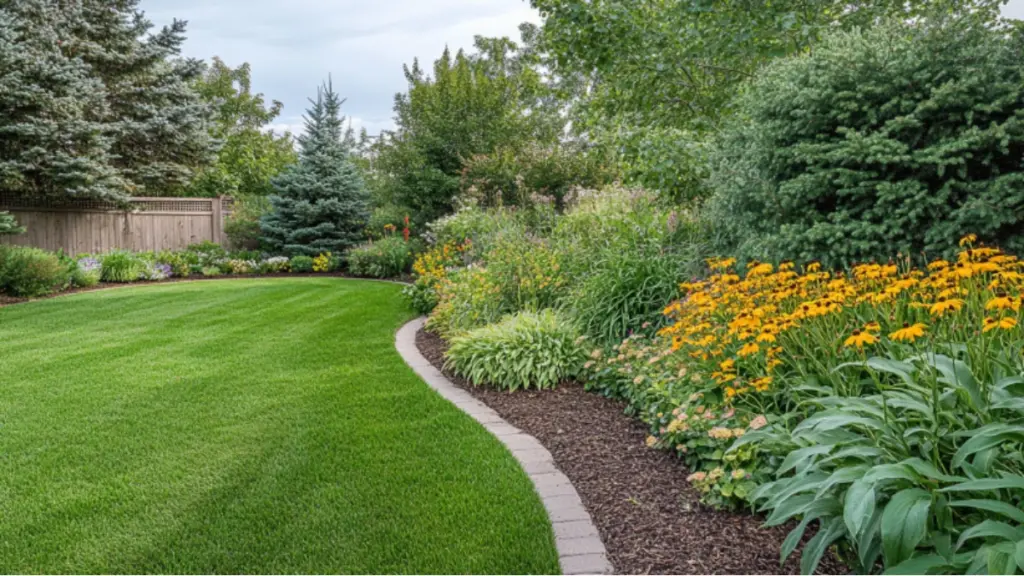
Conclusion
Designing a low-maintenance landscape is about working smarter, not harder. By selecting the right plants, incorporating hardscape elements, and planning with long-term simplicity in mind, you can transform your yard into a serene, easy-care retreat. Whether you’re replacing your lawn, installing drip irrigation, or just adding mulch, each small step reduces maintenance while enhancing the beauty and functionality of your outdoor space.
With thoughtful planning and a few key upgrades, your outdoor living area becomes a place to enjoy, not endure. A space that welcomes rest, beauty, and natural ease—all year long.

